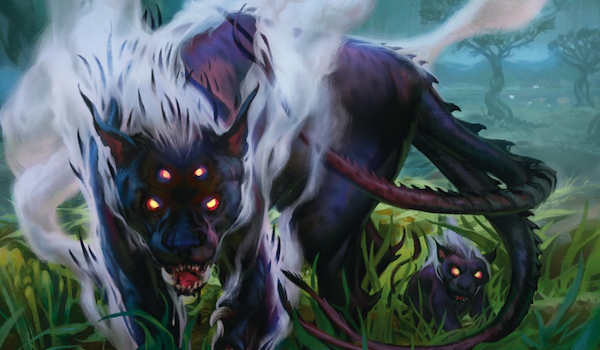Are you a Quiet Speculation member?
If not, now is a perfect time to join up! Our powerful tools, breaking-news analysis, and exclusive Discord channel will make sure you stay up to date and ahead of the curve.
The more I dig into the metagame, the more article topics I find. This is by design, because that's how research is supposed work. Every article is just the preface to the next, as I heard in graduate school. It's usually the case that the problem that you began looking into is only part of the overall problem, specifically the most visible part. It's during the digging that the extent of what needs to be found becomes apparent. Assuming that you can notice it yourself. Becomes sometimes it takes other eyes to find them because you were too focused on your main question. Or it just never occurred to you. In academics, this is what the review process is for. In content creation, this is why we seek feedback and reader comments.
While I was working on last week's article, something was tickling the back of my mind. There was a general feeling that something unfair was going on, but I couldn't articulate anything. There was just a general sense that I was missing something. It wasn't until publication and subsequent discussion happened that I finally realized that we're all focusing on the wrong thing. The trend of Modern decks aggressively lowering their curves, upping their card flow, and also seeing a general price increase didn't start with Modern Horizons 2. It started when Lurrus of the Dream-Den was printed. MH2 just left no doubt or place to hide.
Lessons from History
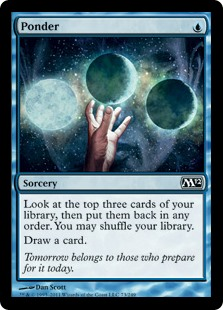 Modern has always been about maximum efficiency. It's a competitive Constructed Magic format. They're all like that. It's just a matter of degree. Standard can never hope to match Vintage's mana efficiency and velocity, but it can be as efficient as its cardpool allows. Modern was no exception, but it wasn't until recently that velocity was really possible. Ponder and Preordain were banned early on and Wizards just didn't print good one-mana cantrips. Thus, Modern players had to focus more on individual card impact than quantity of spells played to win the game. The cardpool also meant that more power was tied up in higher mana costs. Storm was always partially an exception (played more cantrips than anyone else, relied on four mana cards), but for the most part Modern was defined by Jund-style gameplay.
Modern has always been about maximum efficiency. It's a competitive Constructed Magic format. They're all like that. It's just a matter of degree. Standard can never hope to match Vintage's mana efficiency and velocity, but it can be as efficient as its cardpool allows. Modern was no exception, but it wasn't until recently that velocity was really possible. Ponder and Preordain were banned early on and Wizards just didn't print good one-mana cantrips. Thus, Modern players had to focus more on individual card impact than quantity of spells played to win the game. The cardpool also meant that more power was tied up in higher mana costs. Storm was always partially an exception (played more cantrips than anyone else, relied on four mana cards), but for the most part Modern was defined by Jund-style gameplay.
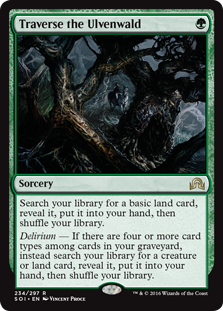 The first good non-Storm deck to bring the Legacy-style of gameplay to Modern was Death's Shadow. Both Traverse Shadow and its successor Grixis Shadow were built around cantrips and minimized mana costs. I'm fairly certain that Shadow decks were the first top-tier, non-aggro decks that intended to never pay more than two mana for a spell (Liliana was far from a universal inclusion). Shadow fell off into 2018, and for a time it looked like Modern was returning to pre-Shadow equilibrium. However, that fall, Izzet Phoenix arose. Since then, Modern has never been without some velocity-centric, low-mana-cost deck. Throughout 2019 we had Phoenix decks, and after Faithless Looting was banned, they became Izzet Prowess.
The first good non-Storm deck to bring the Legacy-style of gameplay to Modern was Death's Shadow. Both Traverse Shadow and its successor Grixis Shadow were built around cantrips and minimized mana costs. I'm fairly certain that Shadow decks were the first top-tier, non-aggro decks that intended to never pay more than two mana for a spell (Liliana was far from a universal inclusion). Shadow fell off into 2018, and for a time it looked like Modern was returning to pre-Shadow equilibrium. However, that fall, Izzet Phoenix arose. Since then, Modern has never been without some velocity-centric, low-mana-cost deck. Throughout 2019 we had Phoenix decks, and after Faithless Looting was banned, they became Izzet Prowess.
Remembering Companion Spring
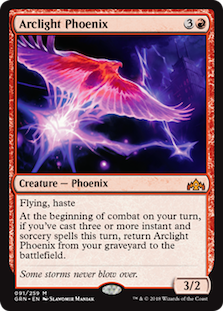 This rewriting of Modern's rules was hard to see because it only applied to one deck at a time. Whenever Phoenix or Prowess was good, Shadow wasn't, and vice versa. 2020's Companion Spring changed that. Having an extra card in hand was so good that every deck contorted themselves to play one. And Lurrus of the Dream-Den was the winner by far. For the first time, every deck had access to a cheap velocity engine that doubled as straight card advantage in Lurrus plus Mishra's Bauble. Even decks that didn't really need it (namely Burn) still ran the cat and curio combo because if they didn't, they'd get buried by those that did. It was a huge break from earlier Modern eras since every deck needed to be as low to the ground as possible and run cantrips, making Modern feel more like Legacy than ever.
This rewriting of Modern's rules was hard to see because it only applied to one deck at a time. Whenever Phoenix or Prowess was good, Shadow wasn't, and vice versa. 2020's Companion Spring changed that. Having an extra card in hand was so good that every deck contorted themselves to play one. And Lurrus of the Dream-Den was the winner by far. For the first time, every deck had access to a cheap velocity engine that doubled as straight card advantage in Lurrus plus Mishra's Bauble. Even decks that didn't really need it (namely Burn) still ran the cat and curio combo because if they didn't, they'd get buried by those that did. It was a huge break from earlier Modern eras since every deck needed to be as low to the ground as possible and run cantrips, making Modern feel more like Legacy than ever.
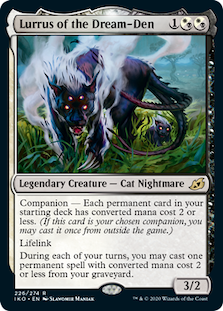 Lurrus was by far the biggest problem for those few months, but it wasn't alone. Yorion, Sky Nomad allowed slower decks to put up a fight against all the Lurrus decks. And it did so by playing every cantrip permanent it could find. Rather than focusing on maximizing individual card impact, the Yorion decks looked to resolve as many permanent spells as possible in order to build into a single massive turn and then overwhelm the opponent, which is in fact quite similar to how the Lurrus decks played. This was necessary because it was Lurrus driving the format, not Yorion. Otherwise, the Yorion decks would probably have taken on their current form of pure goodstuff piles with fewer cantrips.
Lurrus was by far the biggest problem for those few months, but it wasn't alone. Yorion, Sky Nomad allowed slower decks to put up a fight against all the Lurrus decks. And it did so by playing every cantrip permanent it could find. Rather than focusing on maximizing individual card impact, the Yorion decks looked to resolve as many permanent spells as possible in order to build into a single massive turn and then overwhelm the opponent, which is in fact quite similar to how the Lurrus decks played. This was necessary because it was Lurrus driving the format, not Yorion. Otherwise, the Yorion decks would probably have taken on their current form of pure goodstuff piles with fewer cantrips.
The Natural Progression
 Nerfing the companions and banning Arcum's Astrolabe were supposed to bring Modern back to its old ways. That didn't happen. After a brief attempt to turn back the clock in July, the rest of 2020 was defined by the same gameplay patterns as before. The format was polarized between the 4-Color Omnath piles and prowess decks, out of which Rakdos performed best. The Omnath decks were all about spending the first few turns durdling into a big turn with Omnath, Locus of Creation, which was only possible thanks to all the cantrips it had access to, the most important being Uro, Titan of Nature's Wrath. Rakdos Prowess became Scourge Shadow to match 4-Color's power, but it could not have hung with 4-Color's card advantage and velocity without Lurrus and Bauble. Despite everything, the best non-control deck was still Lurrus.dec.
Nerfing the companions and banning Arcum's Astrolabe were supposed to bring Modern back to its old ways. That didn't happen. After a brief attempt to turn back the clock in July, the rest of 2020 was defined by the same gameplay patterns as before. The format was polarized between the 4-Color Omnath piles and prowess decks, out of which Rakdos performed best. The Omnath decks were all about spending the first few turns durdling into a big turn with Omnath, Locus of Creation, which was only possible thanks to all the cantrips it had access to, the most important being Uro, Titan of Nature's Wrath. Rakdos Prowess became Scourge Shadow to match 4-Color's power, but it could not have hung with 4-Color's card advantage and velocity without Lurrus and Bauble. Despite everything, the best non-control deck was still Lurrus.dec.
A Turning Point
In January 2021, there was a twist. Hammer Time emerged and while it hasn't always been high tiered this year, it has managed to remain a contender. This is despite this deck being around for a while (I played against several versions back in 2019) it had never done well enough to earn any notice. It was the adoption of Lurrus as its companion that changed things. In fact, it set the tone for all the aggro decks that have seen play in 2021, particularly since the Uro ban. The best aggro deck has either been the best velocity deck (Izzet Prowess, namely) or the best Lurrus deck. Sometimes it was Hammer Time; sometimes it was Jund Shadow.
Where We Are Now
Which brings me to the current metagame. Unless there is an enormous shift starting right now, the October metagame update will look very similar to September's. There's no interruption in this trend of velocity and/or Lurrus deck domination. In fact, it's looking like the Lurrus decks will extend their lead over velocity. Modern Horizons 2 did not change or even substantially contribute to this overall trend, but it is helping Lurrus pull ahead.
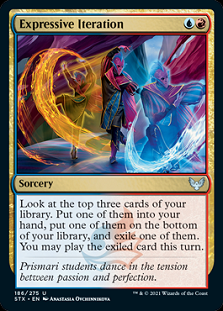 Of course, this is just one part of the metagame. There's a lot more going on throughout Modern than just Lurrus vs Expressive Iteration. However, this conflict is definitely at the forefront of most player's thinking and discussions. UW Control is performing very well on the basis of it being reworked to better deal with the Lurrus and Iteration decks. Burn is also making a resurgence thanks to the drop-off in rival Prowess decks driven by MH2 changes and the meta's evolution. It is telling that the latter still sometimes runs Lurrus even though Bauble is long gone.
Of course, this is just one part of the metagame. There's a lot more going on throughout Modern than just Lurrus vs Expressive Iteration. However, this conflict is definitely at the forefront of most player's thinking and discussions. UW Control is performing very well on the basis of it being reworked to better deal with the Lurrus and Iteration decks. Burn is also making a resurgence thanks to the drop-off in rival Prowess decks driven by MH2 changes and the meta's evolution. It is telling that the latter still sometimes runs Lurrus even though Bauble is long gone.
While all the MH2 additions have seen their share of player dissatisfaction, none have done so as visibly as Ragavan. And there are certain elements of the card that are troubling and potentially dangerous. However, there evidence that it actually is dangerous is lacking. In fact, Ragavan is an excellent stand in for all of MH2 as to why it isn't the metagame driver that players think.
Ragavan Is an Illusion
Ragavan, Nimble Pilferer is a very powerful card, arguably riding the line of what is acceptable. If it didn't make treasure, or didn't steal cards, or didn't have dash, it would be perfectly fine and maybe just barely playable. However, it does all of those things, and as such can run away with games. It certainly does in Legacy. As a result, Ragavan has become a premier threat for a lot of decks and is the focus of many player complaints.
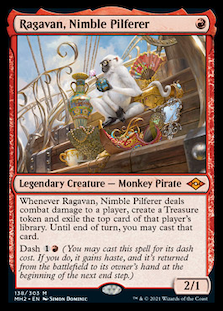 However, the metagame has absorbed Ragavan and made it largely a non-issue. Yes, Ragavan can still run away with games in a way Modern hasn't seen since Deathrite Shaman. However, because that can only happen when Ragavan attacks and connects, it's far easier to manage. Every deck these days can block Ragavan on turn 2 and/or has multiple ways to remove it. As a result, Ragavan is quickly becoming just another threat in Modern. For proof of this, when Deathrite was legal in Modern and Legacy, it went into every deck, becoming basically ubiquitous. That isn't happening with Ragavan. Yes, the monkey does show up in weird and unexpected places. But not consistently. If Ragavan was powerful enough to warrant inclusion in every deck, then it would be showing up in even more unexpected places more than it does.
However, the metagame has absorbed Ragavan and made it largely a non-issue. Yes, Ragavan can still run away with games in a way Modern hasn't seen since Deathrite Shaman. However, because that can only happen when Ragavan attacks and connects, it's far easier to manage. Every deck these days can block Ragavan on turn 2 and/or has multiple ways to remove it. As a result, Ragavan is quickly becoming just another threat in Modern. For proof of this, when Deathrite was legal in Modern and Legacy, it went into every deck, becoming basically ubiquitous. That isn't happening with Ragavan. Yes, the monkey does show up in weird and unexpected places. But not consistently. If Ragavan was powerful enough to warrant inclusion in every deck, then it would be showing up in even more unexpected places more than it does.
And that's the key. Ragavan only works in a shell that will specifically support it. You can certainly get some value running it anywhere, but not enough to stand out. The best Ragavan lists are built to clear the way for the monkey while still being fine without ever connecting. Which worked great for UR Thresh for a while, but not anymore. The format has caught on and both in September and so far in October its numbers and win rate are down substantially.
Lurrus Is the Real Deal
Meanwhile, all the Lurrus decks are seeing an increase in win rate. Unless something changes dramatically, Hammer Time will the top deck for the fourth month in a row. The Lurrus standard bearer continues to perform. However, the best performing high-tier deck is Jund Saga. 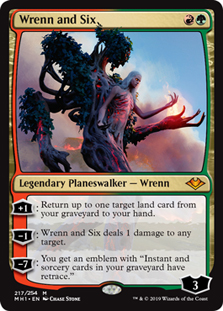 Its average points and overall win rate are better than for any other Tier 2+ deck despite being on track for mid-Tier 2. And the reason is that the deck is at once the best Ragavan deck and the best Urza's Saga deck because it is also the best Lurrus deck.
Its average points and overall win rate are better than for any other Tier 2+ deck despite being on track for mid-Tier 2. And the reason is that the deck is at once the best Ragavan deck and the best Urza's Saga deck because it is also the best Lurrus deck.
Part of Jund being the best Saga deck hands down is because it gets to recycle its Sagas with Wrenn and Six. However, it also makes great use of the tutoring abilities to add to its disruption package and beef up Tarmogoyf. All the removal and targeted discard clear the road for Ragavan far better than the counterspells of other versions. But most importantly, Lurrus is there to restart whichever engine fails and/or to close out a stalled game. Simply put, Lurrus is the key card gluing together Modern's best-performing deck. A deck that existed before MH2 in slightly different form.
Who Needs Who?
And this is my final point: how many decks require MH2-versus-Lurrus to exist? Or at least to take a form recognizable to their current iteration? The only deck that is consistently devoid of additions from the past two years is Burn, but there are plenty of decks like UW Control that could exist with MH2 or even 2020 cards. Meanwhile, UR Thresh and Cascade Crashers could not exist in their competitive form without MH2. All of Thresh's threats are from that set. Without MH2, the spell core would still be used but for the very different UR Prowess. Cascade Crashers needs Fury and Shardless Agent. Without Fury, Crashers is very soft to creature decks, and without Agent it lacks on color enablers.
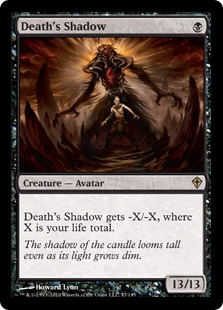 Meanwhile, Jund Saga would revert to Jund shadow, a Lurrus deck without MH2. Without Lurrus, Jund would have an entirely different character, looking more like 2019 builds. Similarly, Hammer Time would straight up no longer be viable. It was around pre-Lurrus in almost the same form; there's no indication that it would survive without Lurrus. That's two of the best decks taken out.
Meanwhile, Jund Saga would revert to Jund shadow, a Lurrus deck without MH2. Without Lurrus, Jund would have an entirely different character, looking more like 2019 builds. Similarly, Hammer Time would straight up no longer be viable. It was around pre-Lurrus in almost the same form; there's no indication that it would survive without Lurrus. That's two of the best decks taken out.
But more importantly, how many Tier 3 or lower decks can only exist thanks to Lurrus? I'm currently playing a UW Humans list that is absolute garbage except for it having Lurrus as a companion. And similar stories can be found around Modern's fringes. Conversely, there are no fringe decks I'm aware of that would not survive without MH2. Domain Zoo has even dropped most of its MH2 cards just to run Lurrus, and that's the best argument available. Lurrus has more impact and power in Modern than MH2.
Was It Meant to Be?
Last December, I put both Lurrus and Bauble on the banning watchlist because the combination felt overpowered, but I didn't know which card was the correct target if one needed to be targeted at all. I can now say with confidence that Lurrus appears in more decks without Bauble than vice versa, meaning that Lurrus is the bigger threat. Given Wizards' design decisions around MH2 and other sets, I'm thinking that they did intend for Modern to be more driven by Lurrus than anything else. The format was tested with un-errated companions, after all. Which, given everything we've seen about the card since it was designed, makes me wonder how long that card has.


